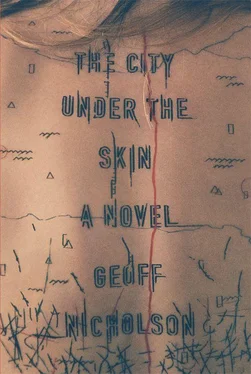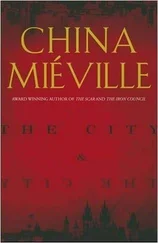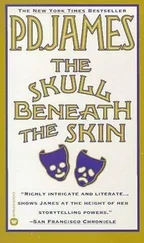“Old tattooists never die, they simply lose their flash.”
The person delivering this piece of hoary tattoo wisdom to Marilyn Driscoll was an old woman by the name of Rose Scarlatti. They were sitting in Rose’s small, dark apartment, the air clouded with the sweet, marginally corrupt smell of clove cigarettes. Marilyn had found Rose online. She’d been looking for somebody who knew some history and wasn’t afraid to repeat it. Her initial word searches had combined “tattoo artist” or “tattooist” or even “tattooer” with other relevant terms, such as “knowledgeable,” “scholarly,” “erudite,” “cerebral.” There had been no shortage of hits, and so to limit the field, she’d added the word “female”—a shot in the dark, but she sensed it would be easier to talk to a woman about this stuff — and Rose Scarlatti was the only one within a hundred miles. Marilyn wanted a face-to-face meeting.
There was a small, unruly, neglected website, graced with a banner— Rose Scarlatti: The Lady Tattooist and Scholar —and a small online gallery that showed her work and the woman herself, and although the site suggested she’d hung up her tools, there was also the implication that if the right project, the right body, came along, she’d be perfectly prepared to get back to work.
Marilyn e-mailed her. Funny how if you’re a young woman and you send an e-mail to some old person and say you’re really interested in their work, and that you’d really love to talk with them in person, they’re likely to say come right on over as soon as you like.
Rose Scarlatti lived alone in an apartment building called the Villa Nova: low-rise, coated in French-blue stucco that had seen better days, but the sign on the front was in a cursive faux-retro typeface, and the individual apartments had balconies where many of the residents were trying hard to establish some greenery.
Rose’s apartment was on the third floor, in the very center, right above the gap between the words “Villa” and “Nova,” and as Marilyn pedaled toward the entrance, she looked up and saw Rose sitting out on her balcony, surveying the street, smoking. She was a thin, dry, neat woman, careful with herself, but not delicate. She peered down, saw Marilyn, waved with her cigarette, and went inside to buzz her up.
Rose’s den was part personal museum, part smoking lounge. Marilyn’s eyes darted around the place, not knowing where to settle, scanning the items of tattoo memorabilia: framed newspaper articles and photographs of tattooed men and women, carnival posters, design sheets, shop signs — too much to take in all at once, though a fierce-looking crossbow mounted above the door to the kitchen was hard to miss. Needing something else to focus on, Marilyn let her eyes settle on an old photograph of a woman who would have appeared severe, respectable, even matronly, if it hadn’t been for the patterns inked all over her.
“That’s Nora Hildebrandt,” said Rose Scarlatti. “The first tattooed lady to be exhibited in America. Daughter of Martin Hildebrandt, German immigrant and tattooist. His glory days were in the Civil War. He went from camp to camp tattooing soldiers on both sides. In his downtime he obviously tattooed his daughter as well. But maybe he thought that would seem a little strange, or maybe not strange enough, so when she went on stage they made up a story, that they’d both been kidnapped by the Sioux, and the Injuns had forced Daddy to tattoo his daughter, every day a new one, once a day for a whole year, 365 of them. Then they set ’em free.”
“Nice story,” said Marilyn.
“Sure. Everybody needs a story. Doesn’t need to be true. Why don’t you sit down, tell me what’s on your mind?”
Marilyn sat down in an unstable, swamp-colored recliner. Her mind was racing. It was an unsettling experience to sit in a room with this trim, benign-looking, gray-haired lady who was dressed in corduroy pants and a crew-necked, long-sleeved cashmere sweater, and to know that beneath the corduroy and cashmere there was a riot of brilliant, obsessive tattooing: the usual in some ways (snakes, flaming skulls, dancing girls, birds of prey, pirates: no maps as far as Marilyn was aware), but with something special and flowing, free-form and spontaneous about it.
She knew all this from the pictures on the website that showed Rose as a much younger woman, more or less naked, more curvy, more arrogant, wilder. But there was also something unfinished-looking about Rose’s tattoos, still a lot of bare skin. Marilyn had seen those pictures of people whose tattoos were like bodysuits of ink, neck to ankle and wrist to wrist, but Rose’s weren’t like that. Hers were limited to certain areas: the legs, the chest, the right arm, while her back, her buttocks, and her left arm were all completely bare. The asymmetry created the effect of a work in progress, not that she’d lost interest or been forced to abandon it halfway through, rather that she was still awaiting new ideas, leaving space for fresh possibilities and inspiration.
Marilyn Driscoll liked that the tattoos were covered up now. It showed a certain reserve, a sense that Rose’s tattoos were a private matter. In public Rose might pass for a retired schoolteacher, but get her alone and naked in a room and she would become something very different.
“I’m doing a project on tattoos and tattooing,” said Marilyn as innocently as she could.
“A project, eh?”
“That’s right.”
“Are you thinking about getting a tattoo?”
“Not really, no.”
“Why not?”
“I think I’d live to regret it.”
“What’s wrong with that? That’s the whole deal with tattoos. You make a choice. And if it turns out you made a bad choice, you live with the consequences, you take responsibility, you don’t blame anybody else. That’s life, right?”
“Sure,” said Marilyn. “Unless you didn’t actually choose to have the tattoos done.”
“Ah right, now you’re talking,” said Rose, and something in her brightened. “Enforced tattooing. A long and shameful tradition.”
“Yes?”
“Oh sure, the Greeks and Romans used to tattoo the words I’M AN ESCAPED SLAVE across the foreheads of their slaves so they’d never be able to become escaped slaves. Clever, huh? And the Nazis, of course. And outlaw bikers sometimes tattoo PROPERTY OF on less than willing girls.
“In India before the British Empire, they used to tattoo convicts with images of their crimes: a bottle if they were drunks, cock and balls if they were adulterers. I guess it might have been a deterrent before the event, but once you’d got the tattoo on you, there wouldn’t be much incentive to stop being a drunk or an adulterer, would there? You might as well live up to your image. And then, of course, some criminals tattoo themselves to show what crimes they’ve committed. They’re proud to wear their crimes on their skin. And I don’t even want to think about what those damn Russians get up to.”
Marilyn could feel that Rose was looking her over intently, professionally, not undressing her with her eyes, but coating her with imaginary ink and imagery.
“You sure I can’t talk you into letting me tattoo you?”
“Really, no,” said Marilyn.
“That’s okay,” Rose said. “It’s good not to pretend. Some people would have come in here and tried to butter me up by saying they wanted me to work on ’em. I don’t care. I like talking about my work, and I like talking to young women; so y’know, I ain’t complaining. Besides, I’m retired.”
She laughed, as though this were a joke she’d repeated many, many times, to the point where she was the only one who still found it funny.
Читать дальше












